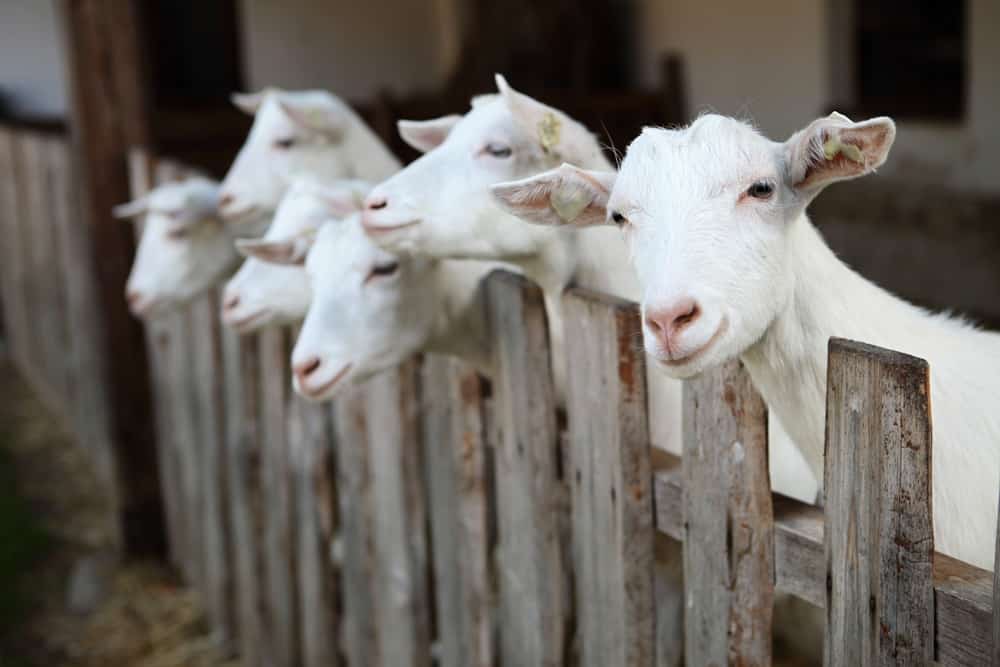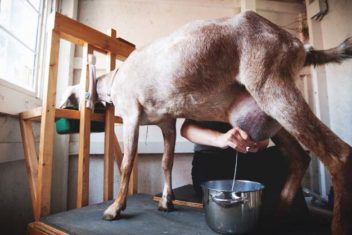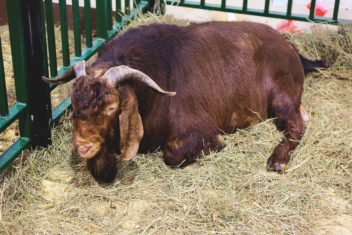Are you the proud owner of goats? Or perhaps you’re considering becoming a proud owner of goats? Well, if so, the first thing you need to consider is the type of fencing you’re going to use to keep your goat friends in their designated area and out of trouble.
Goats are wily creatures that can be startlingly good escape artists. One glance through homesteading forums and you’ll come across a ton of stories about how they’ve gotten out of their pens and enclosures.
Fortunately, there are some surefire ways to keep them right where they belong.
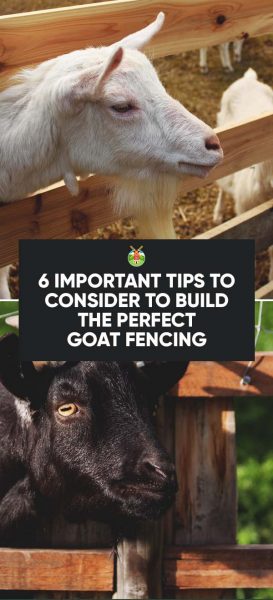
Prioritize Keeping the Goats Inside
The first thing to consider is how you’ll keep your goats enclosed.
If you’ve looked through Pinterest or Instagram, chances are you’ve seen some posts that showed adorable-yet-impractical fencing options. For example, white picket fences with floral window boxes are ridiculously cute, but your goats will leap over those with great enthusiasm.
When you’re designing your goat fences, the cuteness factor has to take a back seat to utilitarianism. As mentioned, these animals are immensely creative when it comes to finding a way out of their pens. You’ll need to choose sturdy fencing that’ll at least put up a fight when the goats are raring to get out.
Potential Options for Non-Electric Fences
One combination that works well is sinking 4×4 wooden posts into the ground—secured with concrete—with mesh livestock wire strung in between.
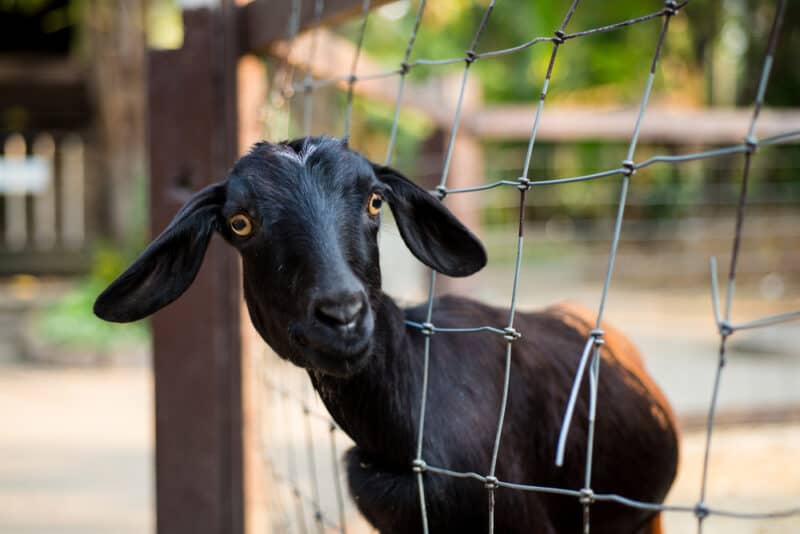
If you go this route, use smaller mesh such as 1×1 or 2×2. Goat hooves can easily fit into the larger mesh holes, thus allowing your animals to climb the fence. Yes, goats can and will climb. Additionally, some livestock fencing can allow smaller goats to slip right through. Those 4×4 gaps in horse or cattle fencing won’t keep kids or pygmy goats inside the pens.
When choosing wire for your fencing, aim for a gauge that will cause minimal damage to your animals if they try to poke through. Check your fencing daily to make sure that nobody has gotten a little snoot or horns caught in anything. We love our animals far too much to see them injured, right?
If there aren’t any predators in your area, and you don’t have to worry about your goats potentially wandering onto a raging freeway, lower fencing should be okay. For pygmy goats, you can aim for five-six feet in height to keep them well penned in. Make the fence eight feet tall for larger goat breeds like Nubians or Merinos.
Make Sure it’s Strong and Reduce Temptations
Bucks can be incredibly persistent when it comes to getting through fencing. This is especially true when it’s rutting season. Goats have their boisterously amorous reputation for a reason, you know.
Aim for a larger gauge steel mesh than you think you’ll need, and build it high as mentioned. Reinforce any potential points of egress, including little gaps that they might try to pull at.
House your bucks well away from your does so they don’t antagonize one another. The bucks will get more frothy if they can hear and smell the females nearby. Similarly, don’t allow any tasty morsels to grow within reach of the enclosure. Goats can be very persistent when it comes to going after a delicious patch of nearby greenery. You really don’t want to see your expensive fencing damaged because there’s a tantalizing patch of kudzu nearby.
Get Good Locks
Goats are smart. Seriously, they’re scary smart. They’re known for being able to open levers, hook-and-eye bolts, and pretty much any other closure out there. You can invest a lot of money into the best fences out there, and they won’t do much good if your goats just flip the latch and mosey on out.
Get yourself some strong, goat-proof Sure Latches for your gates, or else use padlocks. Sure, it’s an extra step to take a key along with you when you do your rounds, but that extra few seconds it takes to open the lock is worthwhile if it keeps your animals safe and sound, right?
Keep Predators Out
Your secondary priority is to keep potential predators from getting to your goats. It’s devastating to lose animals for any reason, but predation by coyotes, wolves, or mountain lions is particularly awful. If you have any of these predators in your area, you’ll need to take safety from them into account when planning your goat fencing.

If you’re in a predator-rich area, ensure that your fences are at least eight feet tall, and lean outwards at the top. This should keep most predators from jumping over them. Additionally, the outward curve will prevent cats from being able to climb up and over.
Additionally, if you know that there are predators in your area, consider getting a livestock guardian. Dogs make excellent goat guardians, though some people prefer llamas, alpacas, or donkeys instead. Let the latter roam in the pasture with your goats, and house them in the same enclosures for nighttime guarding.
If you have a large property and sufficient funds to play with, consider creating a double row of fencing with a corridor-like area between them. This is sort of like the double bailey formed around old forts and Medieval castles. Potential predators would have to scale the outer wall, cross the corridor, and then scale the inner wall to get to your goats.
That corridor between fence walls is the ideal place to keep your guard dog(s).
Set up a doghouse at either end with food and water, and allow your dog(s) to roam freely. That way, if any predator actually manages to make it past the first wall, your dog(s) should be able to get to them before they get to the second one.
Consider Electric Fencing
If you’re dealing with both stubborn, large goats and predators, consider using electric fencing instead. This is great for dissuading animals from approaching the fence from either side.
Granted, it also means that your goats are going to get shocked until they realize that they need to stay away from the fence. That said, a few shocks are absolutely worthwhile if it means that your animals will be less likely to leap out into coyote land, or venture out onto a major highway.
Of course, if you’ve gone for the double row of perimeter fencing as mentioned above, you can electrify the outer fence rather than the inner one. This will keep your goats safe, and you can increase the voltage to be really discouraging to potential predators.
There should be a low wire set a few inches above ground level to keep sheep from crawling below the fence. Just don’t make it so low that it can get grounded, and thus be ineffective. Aim for a charge between 4,500 and 10,000 volts, and make sure the power is on at all times. This probably goes without saying, but don’t rig up your gate to be electrified unless you want to shock yourself into oblivion every time you feed your animals.
If your soil is very hard, rocky, or dry, then an electric fence may not work efficiently, if at all. Look into other options if this is the case, or you’ll spend a ton of money for no good reason.
Fence Maintenance
If you’ve used galvanized steel mesh, you’re in luck. This stuff doesn’t rust, so you don’t have to worry about it deteriorating over time. Plastic-coated fencing might look nice but has to be re-coated annually as the plastic flakes off.
Do a perimeter sweep of your fencing on a daily basis to check for any potential issues. One good way to remember to do this is to do a quick walk around when you feed the animals. It doesn’t take long to do and can offer you the opportunity to nip problems in the bud.

Remember that goats take advantage of every possible gap they can find. As a result, a poorly maintained fence will result in your goats running rampant in the vicinity.
Is your property surrounded by woodland? Or are there any tall trees around? Falling limbs—especially after storms—can take out large sections of your fence. Make sure to check on fencing during periods of high winds or heavy snow to keep issues in check.
Keep in mind that male goats will be a lot rowdier and more eager to break free than the females. Trust your intuition and go check on their fencing if you feel like something might be wrong, even if it’s not at your usual maintenance check time.
Keep Your Goats Happy for Fewer Escape Attempts
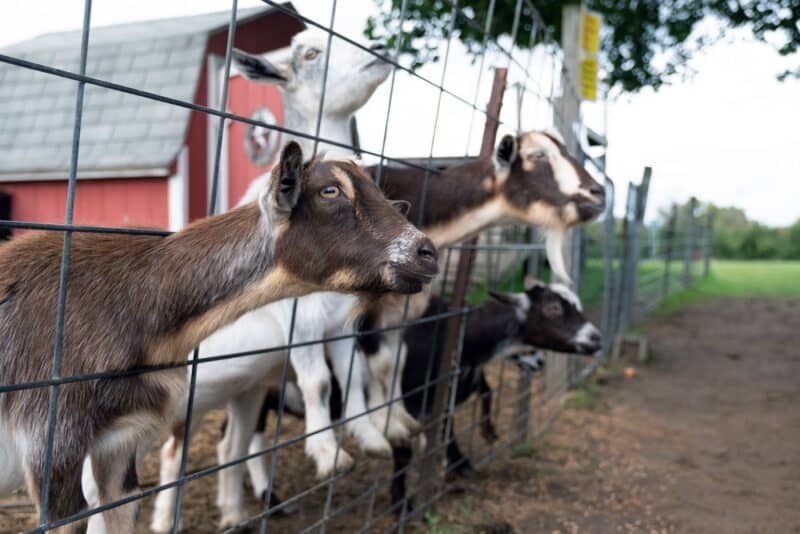
One of the main reasons why any animal would try to escape its enclosure is that it’s unhappy. You’d probably do the same, right? As you can imagine, goats that aren’t particularly happy with their living conditions will try to get out asap.
Make sure they have a warm, cozy pen that they feel comfortable in, and keep it full of fresh, fragrant, clean hay. Provide them with plenty of toys and climbable items to play with, and spend time with them whenever possible.
Invest in high-quality goat treats and dole them out generously, along with tasty plants that they love to eat. Much like us, the goats won’t feel the need to run away if they’re truly happy where they are.
Keep them content and safe from predators, and you’ll have much less need to worry about them trying to break free.

